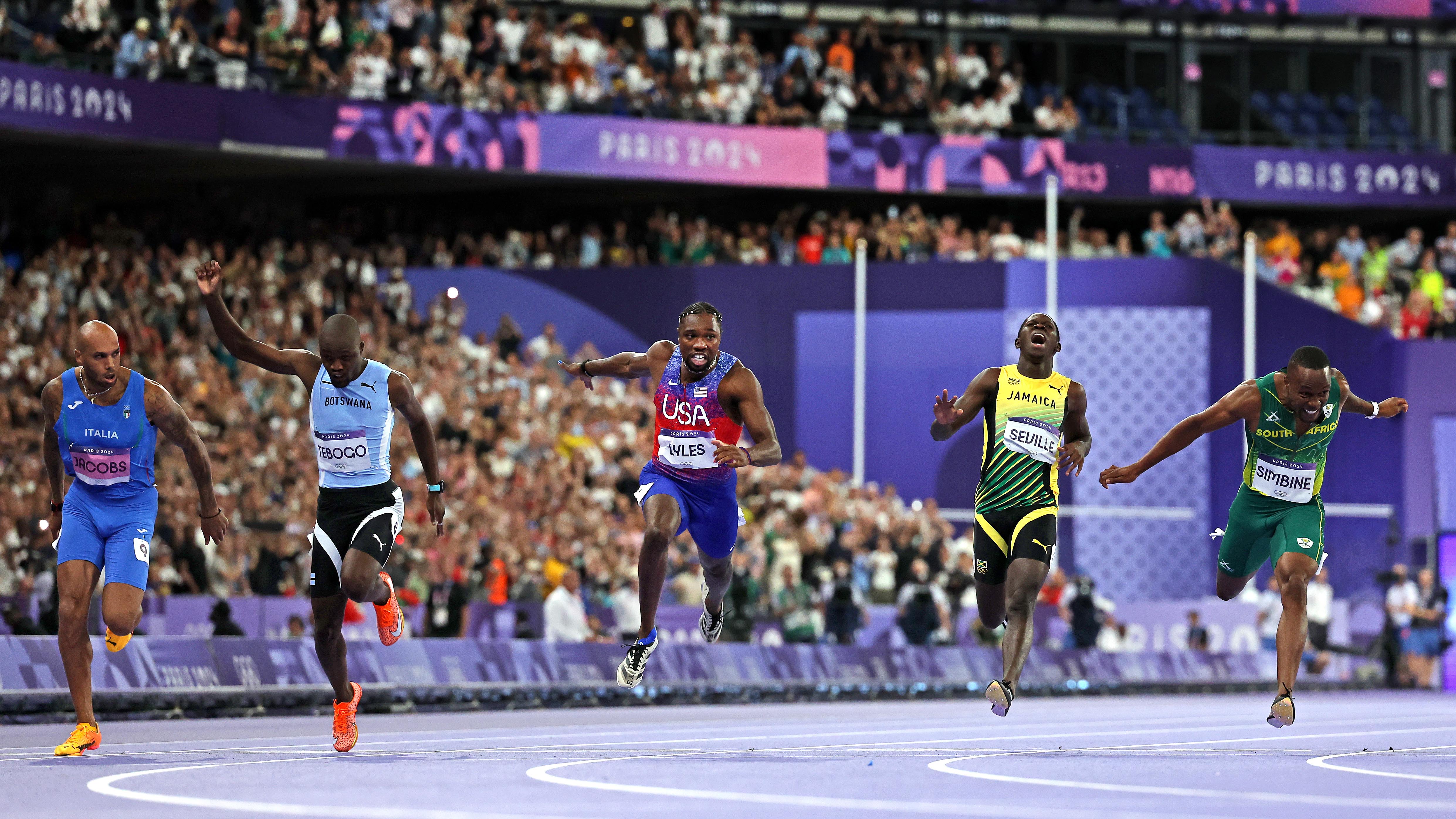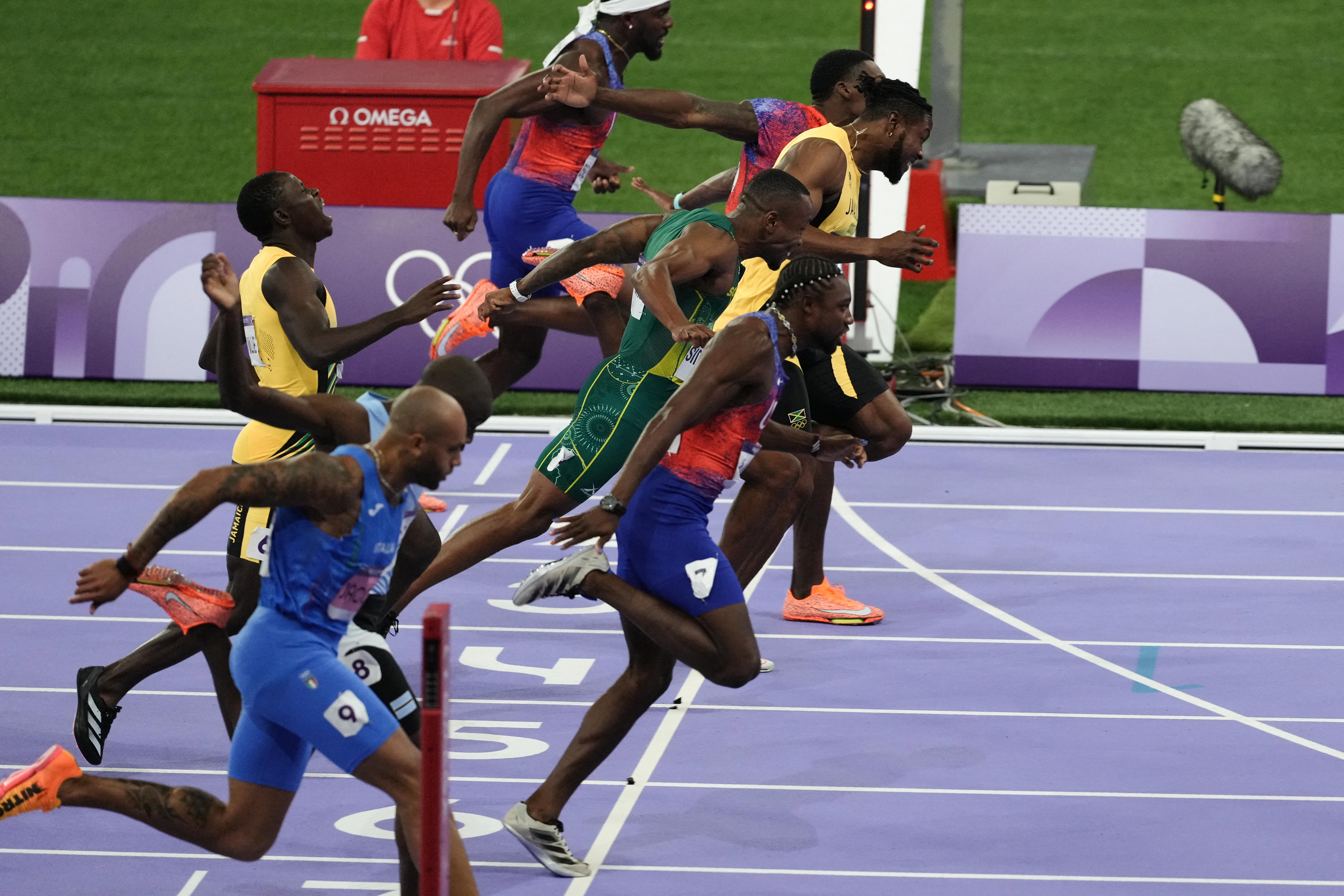
Sunday was the Men’s 100m final at the Paris Olympic Games and it was decided on the shoulder dip to the line with 0.005s separating first and second. Immediately after the race, I got about 50 messages asking if aerodynamics could have played a role in the outcome of the race. Having been adjacently involved with some running projects over the years, I already thought the answer was probably yes.
The Women’s 100m final was won by a good margin so there was less talk about the difference aerodynamics could have made, even if some athletes could have made better equipment choices.
It’s intuitive to the average cycling, skiing, speedskating or swimming fan that aerodynamics (or hydrodynamics) is a very important part of performance. We can all look at images of racing in the early 2000s and question “how much faster would they have been if they weren’t all wearing those loose-fitting jerseys?”. Why, then, do runners continue to wear loose vest tops and not tie their hair up?
The answer is that they just don’t think it makes that much of a difference. In this article, I’m going to explore what difference it actually makes and what can be done under the current rules to achieve faster times (Spoiler: It’s a lot).
How much aero is there in running?
Firstly, lets quantify what the impact of aerodynamics has on running times. In cycling, it’s often mentioned that at 40kph, 80% of the resistance faced by a rider comes from aerodynamic drag but in running we know this is much less. Schickhofer and Hanson* found in 2021 that 8.5% of an athlete’s energy goes into overcoming aerodynamic drag at 36kph. Some extrapolation of the results shows that at 43kph (top speed seen in the Men’s 100m), this increases to 10%.
The reason that this contribution is much smaller than cycling at essentially the same speed is because of the physics of the running motion. The athlete has to raise their centre of mass with each stride and this takes up most of the energy of running. However, if we can reduce the drag of the athlete then there is still a lot of performance to be found.

So how much is it worth?
Research done in the 1980s** showing the effect that aerodynamics can have on race times. The researchers calculated that in the 100m dash, there was a 0.01s reduction in finish time to be gained from a 2% reduction in aerodynamic drag. The Men’s 100m race in Paris was decided by half that so can we say that a 1% change in aerodynamic drag could have changed the result? Based on the existing research, I think we can.
The same research also found that the 2% drag reduction would give a 5.7s improvement in marathon time, with the other events somewhere between.
Comparing to some other results and some of my previous work in marathon running indicates that this is still an accurate number.
What can be done to reduce drag to improve times?
Now we get to the fun part.
5.1. “In all events, athletes must wear clothing which is clean, and designed and worn so as not to be objectionable. The clothing must be made of a material which is non-transparent even if wet. Athletes must not wear clothing which could impede the view of the Judges.”
That’s the only rule in Athletics that governs the clothing materials that can be used and where they can be placed (apart from the name/number bibs on the front/rear of the athlete). When combined with the results seen earlier, it’s clear to me that the athletes are leaving a lot of time on the table.
Just before the Paris Olympics started, Bert Blocken released a study*** looking at the differences in drag between different hairstyles and clothing choices in the women’s long jump. From the worst to best hairstyle and clothing choice, loose to tight shorts and vests and loose curly hair to a swim cap/bald head, the researches found a 36.6% drag reduction. Applying this to the time saving calculation gives a potential saving of 0.183s over the 100m race!

However, most of the athletes were wearing tight fitting shorts and reasonably tight running vests, meaning that the savings available to the athletes in the finals we saw will be much less. Looking into the results more closely; there was an 18.2% difference in loose fitting vs tight shorts, reducing our potential drag and time savings to 18.4% and 0.092s based on the research. The research was also performed on a female mannequin and the effect of moving legs wasn’t captured. We are also unsure if the same drag reductions would apply to the male athletes but this is the best and most recent data we have so we will have to go with it for now.
An interesting result from Blocken’s research is that a 4.4% drag reduction can be found by using a tight fitting vest vs a loose fitting one. Based on the research from the 80’s, this would give a time saving of 0.022s over the 100m. The Men’s final was won by 0.005s and second place was using a loose-fitting vest. Even if the savings don’t fully translate from a stationary female mannequin to a male runner, you have to question if that made the difference. The same caveats that apply to cycling applies to every sport in that aerodynamics is very individual so without testing on Kishane Thompson, we won’t know if the loose vest was a deciding factor in the outcome of that race.
What the research didn’t include was looking at different fabric texture and placement. To me this is where there are huge possibilities. I’ve seen that against bare legs, the best calf guards in cycling/triathlon can degrease drag by up to 10%. Then by using a full skinsuit with long sleeves and shorts that extend as far as possible, it’s feasible that another 10% saving can be achieved. We’ve seen bigger savings in other sports from skinsuit use and fabric selection and runners present much more frontal area so I would expect that more savings are possible but will be conservative with the estimation and keep it at 10%. Of course, running is in a different position than cycling but these are conservative estimates based on testing I’ve seen first-hand.
There hasn’t been any research (that I can find) on the aerodynamics of shoes. This is despite the foot travelling at nearly twice the average moving speed of the athlete (Clark et al.****). For the 100m race, this gives a peak foot speed of over 80kph. Understanding the drag and lift characteristics of the shoe could provide significant savings as drag increases to the square of speed and the foot is travelling so quickly in the running stride. I can’t put a number to this as I’ve never tested it but a good model could give a good insight into what’s possible here (masters thesis idea, anyone?).

I don’t think it’s unreasonable to think that using tight fitting garments and developing new clothing and shoe solutions using fabrics appropriate to the aerodynamic demands of the races that a 30% drag reduction could be possible. In the 100m dash, this could give time savings up to 0.15s. This doesn’t just make the difference in the race outcome but could bring the sprint world records back into reach. The same methods can be applied to all of the running with similar results. The Ineos 1:59 Challenge showed that aerodynamics still makes a difference (even a small one) at lower speeds.
To some this might seem like an unrealistically large number to claim but to them I would say look at where cycling has come from. From loose-fitting jerseys and no helmets to where we are now, we have seen a huge reduction in the aerodynamic drag and performance of the riders. In athletics, aerodynamically speaking, the easy wins are still to be had.
I don’t want this article to come across as if I’m saying cycling is a better sport than running. For years, cycling was the worst culprit at ignoring sport science and was lagging decades behind the likes of Swimming, Skiing and Speedskating especially.
We have to remember that athletics hasn’t started the journey of taking aerodynamics seriously yet, despite attempts from Cathy Freeman and Nike, with the Swift Suit back in Sydney. That’s not without good reason, it makes much less of a difference than all the aforementioned sports. But with times stagnating compared with the likes of Swimming, Cycling, and Speedskating, I think it’s time they start on it.
References
* Schickhofer and Hanson , 2021 Aerodynamic effects and performance improvements of running in drafting formations
** C.R. Kyle, V.J. Caiozzo, 1986 The effect of athletic clothing aerodynamics upon running speed
***Bert Blocken et al. 2024 Numerical-physical modelling of the long jump flight of female athletes: Impact of jump style, hairstyle and clothing
****Clark et al. 2023 Horizontal Foot Speed During Submaximal and Maximal Running







